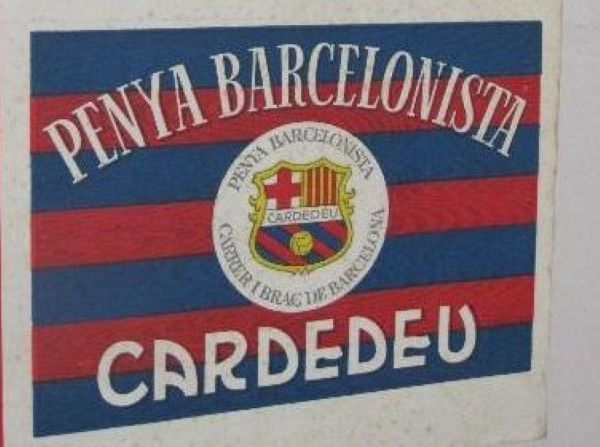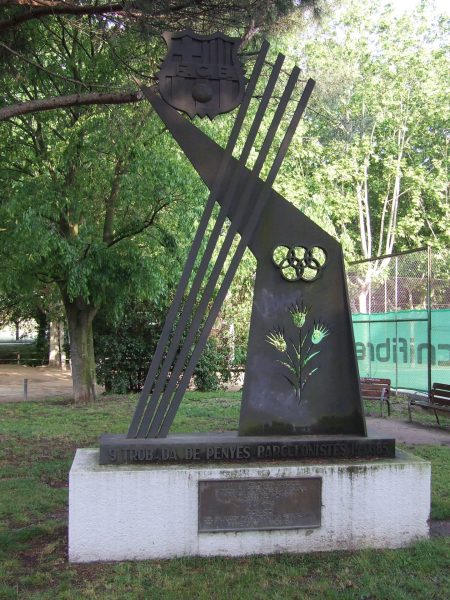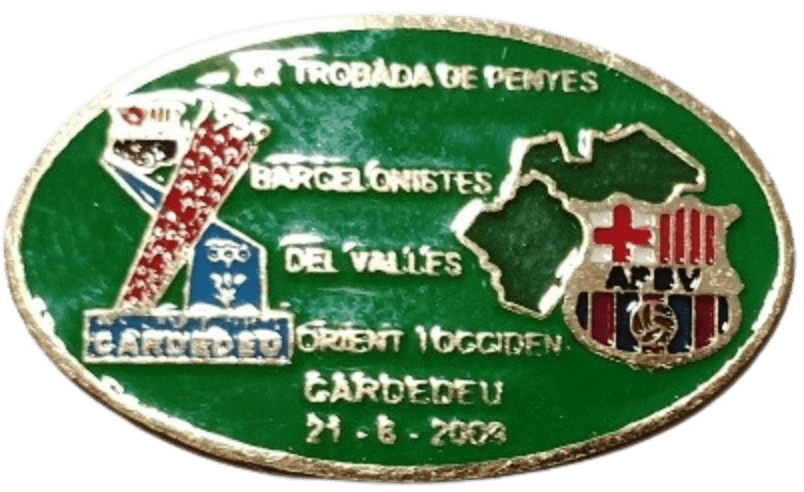The Penya Barcelonista de Cardedeu can be considered one of the emblematic organizations of a town where culture and tourism have flourished for years. A supporters’ club that, shortly after its founding in 1959, organized for many years “L’envelat,” a key event of the town’s Festa Major. Today, it remains active at its headquarters, located at 21 Hospital Street, one of the most popular streets in town.
Gastronomic tradition
Cardedeu is known for its organic farming, being one of the leading areas in Catalonia for this type of agriculture. A standout product is the “ganxet bean,” a specialty of the Vallès Oriental region, along with tomatoes of local varieties. Intensive livestock farming produces dairy products such as those from Can Bordoi and La Païssa.
More and more restaurants are choosing to use locally sourced products, including beverages like the wide range of San Jordi craft beers, brewed in the early 20th-century warehouse of Cal Peó, and the revival of old vineyards to produce quality wines. Cardedeu is also known for its “borregos,” a type of anise-flavored biscotti made from a unique recipe. As dry pastries, they pair well when dipped in muscatel or homemade ratafia, the latter made from a traditional recipe recovered by the Tomàs Balvey Museum-Archive of Cardedeu. The town’s gastronomic tradition goes way back—not only with ratafia and borregos; in fact, the famous Cacaolat chocolate milk drink was created at the Viader Farm in Cardedeu.
History according to PB Cardedeu
“Cardedeu is a medieval town first mentioned in 941 under the name Carotitulo, located at the foot of the Montseny mountains along the Vallforners stream, which originates near the Sui peak in Cànoves. This location and its territorial layout give it the appearance of a typical Vallès plain—open, with a mountainous backdrop and a mosaic landscape of accessible fields and forests surrounding the town. Perhaps for this reason, and due to the arrival of the railway, Cardedeu became a popular summer destination for Barcelona’s upper class, transforming the urban landscape with numerous modernist and early 20th-century villas, and a particularly beautiful cemetery featuring monuments from that era, including a historic funeral cart. As the saying goes: ‘A box at the Liceu and a villa in Cardedeu.’
Several municipal buildings are of modernist and especially early 20th-century architecture. These include the main town hall, the Territorial Services building, the Daurella House (museum), Villa Paquita (Department of Culture), the former Can Borràs factory (now housing social services and the police), and the Rase Textile Factory, which is being transformed into the town’s cultural and professional hub. The Tomàs Balvey Museum-Archive, located in the town center, is worth a visit—it preserves the unique old Balvey pharmacy, among other relics from the collector it’s named after. The museum also organizes guided tours of modernist buildings, many of which can be entered, often with actors portraying historical characters. Cardedeu was once recommended as a health destination for its fresh air. One of the town’s current mottos is: “In Cardedeu, by bike and on foot.”
Host of the 9th World Penyes Meeting
Cardedeu also has an old airfield, currently under development, which still preserves some air-raid shelters from the Spanish Civil War in the 1930s. Among its natural spaces are the hermitage of Sant Hilari on the town’s outskirts—where the Sant Hilari gathering is held every second Sunday of the year—and the Pompeu Fabra and Pinetons parks, both within the urban area. In the latter, you’ll find the monument to the 9th World Penyes Meeting, held in the town in 1985. In the same location, the 20th Vallès Penyes Meeting was organized in 2009 to commemorate the 50th anniversary of PB Cardedeu.
A prestigious Festa Major
In the 1970s, toward the end of Franco’s regime, Cardedeu stood out as a cultural vanguard with groundbreaking events like folk nights (the Catalan Woodstock) – later replicated in Canet de Mar by the group La Trinca – and jazz nights in the iconic Pinetons park. Today, the flame of cultural activism still burns. The seeds planted by the Castells Brothers (renowned Catalan theater set designers) and others have grown into new cultural initiatives that have made a lasting impact.
Cardedeu’s Festa Major (around August 15) is a highlight on the regional calendar and beyond, thanks to its strong focus on free, public street performances (circus, dance, performances, music) organized by the El Garitu collective, and the deeply rooted alternative, self-managed Festa Major organized by local youth at the Polvorí. The festival takes place almost entirely in the town center, around the Church of Santa Maria and the charming chapel of Sant Corneli. Popular culture is well represented with a wide range of traditional groups: the century-old geganters (giant puppets), sardana dancers, devils, stick dancers, traditional music groups, and the controversial trabucaires (blunderbuss shooters). In recent years, the traditional and popular Espolsada Dance (at noon on Festa Major Sunday) and the Gitanas Dance of Cardedeu (the Sunday before Carnival) have been revived.
Cardedeu inspires culture
Cardedeu is rich in cultural offerings from many active organizations. Each autumn, El Cardot hosts the Cardoterror film festival; the cultural association L’Esquellot organizes the Tastautors singer-songwriter and Catalan music series in January–February; Òmnium hosts the VOC short film festival in Catalan; and the century-old Coral Cardedeuenca choir organizes the Resuena music festival each spring. In May, the town holds the Sant Isidre Fair focused on agriculture and livestock; in October, the Beer Fair; in November, the Modernist Fair; and in December, the traditional Christmas Fair. Every January, the traditional Sant Hilari gathering takes place at the rural hermitage. Private initiatives also frequently organize the Antiques Fair.
Cardedeu also has a regular cinema program at the Esbarjo Municipal Cinema, showing independent films from around the world in original version with subtitles, as well as Catalan and documentary films. The Cardedeu Auditorium Theater offers a regular schedule of high-quality performing arts across various disciplines. Perhaps that’s why one of the town’s current mottos is: “Cardedeu inspires culture.” Cardedeu was also the birthplace, in 1981, of the first Catalan-language television station and the first local TV station in Spain. Today, “La Tele” is the organization with the most members and has served—and continues to serve—as a prestigious training ground for audiovisual professionals.








